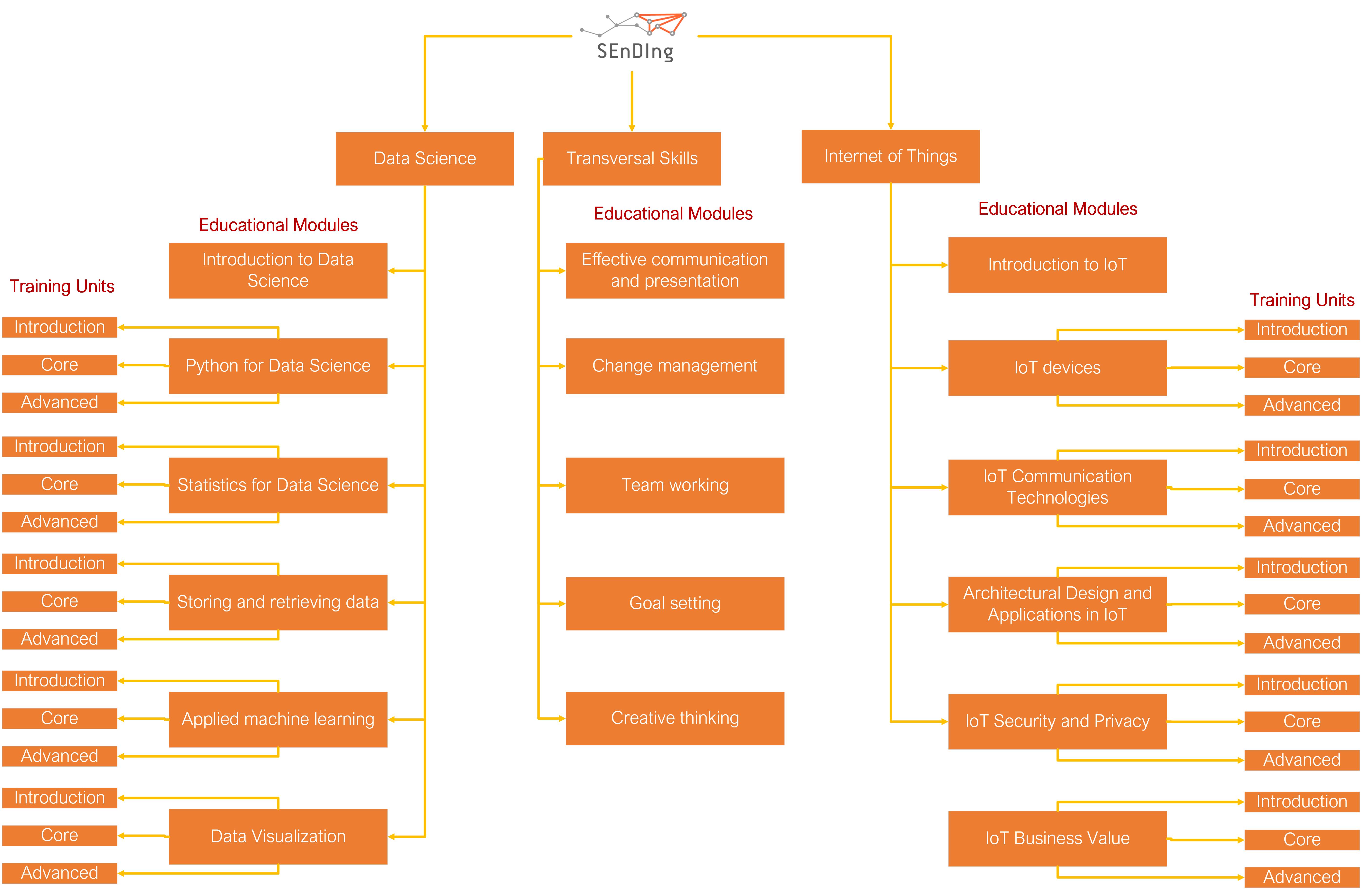Curriculum for Data Science and IoT training
Curriculum is increasingly seen by stakeholders as a dynamic framework guiding the teaching and learning processes, and as a steering mechanism for quality. The SEnDIng curriculum combines technical knowledge and skills at Data Science and IoT domains with transversal skills and competences.
The key characteristics of SEnDIng curriculum are three.
- Multi-disciplinarily. The modules developed cover both technical knowledge and skills at Data Science and IoT domains as well as transversal skills and competences. The transversal skills aim to build upon academic and experiential learning and to prepare the IT professionals for engaging within the business environment in a creative way, communicating effectively with the internal and external environment of a business and acting in a collaborative way.
- Modular. For each domain, the curriculum is separated in educational modules. The modules have been designed by selecting and ordering the types of learning activities that trainees undertake to achieve the learning outcomes of each module. Each module is further divided in training units at three levels of proficiency:
- Introductory (I): The educational module is introduced and its most important aspects are given,
- Core (C): All core aspects, principles and methods of the module are covered in sufficient detail as necessary to apply the knowledge and skills on the job. The learner becomes able to discuss matters with other stakeholders and acquire more knowledge when necessary and
- Advanced (A): Advanced aspects of the module are covered in sufficient detail as necessary to apply the knowledge and skills on the job. This permits the learners to create their own learning paths according to their needs. As the learning outcomes aimed by the transversal skills training are horizontal, the educational modules of the transversal skills are not split into the three training units (Introductory, Core and Advanced).
- Learning outcomes-oriented. The curriculum give emphasis on what an individual should know, understand and/or be able to do at the end of a learning process. Such curricula consist an effective way to avoid potential mismatches between academia and industry, and furthermore to promote active learning and inclusive training.
The methodology applied for the development of SEnDIng VET curriculum is based on the constructive alignment approach. This approach maximizes the conditions for quality learning by ensuring alignment throughout the process, from the forming of learning outcomes, to the choice of teaching methods to assessment. It assumes that when learning objectives, assessment methods, and teaching and learning activities are intentionally aligned, the outcomes of learning are improved substantially. The process of constructive alignment emphasizes that learners are central to the creation of meaning, and must be provided with opportunities to actively select, and cumulatively construct their own knowledge.
The overall structure of the SEnDIng VET curriculum is show below. For more information about the curriculum please refer to this document.




